Archaeologists have unearthed a beautiful painting 2,000 years after it was buried under rubble in the ancient Roman city of Pompeii.
The lavish artwork was found in the House of Leda, known for its intricate murals.
It shows Phrixus and Helle, two twins from Greek mythology, traveling across the sea on a magical ram while fleeing from their evil stepmother.
In the scene, Helle reaches up to Phrixus after falling from the ram, shortly before drowning in the strait between Europe and Asia.
Pompeii was destroyed in 79 AD by the eruption of Mount Vesuvius, but excavations continue to yield ancient discoveries.
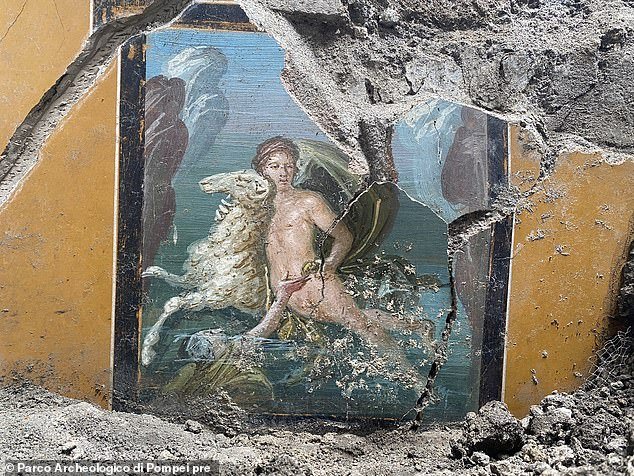
The painting shows Phrixus and Helle, two twins from Greek mythology, fleeing their stepmother on a magical ram
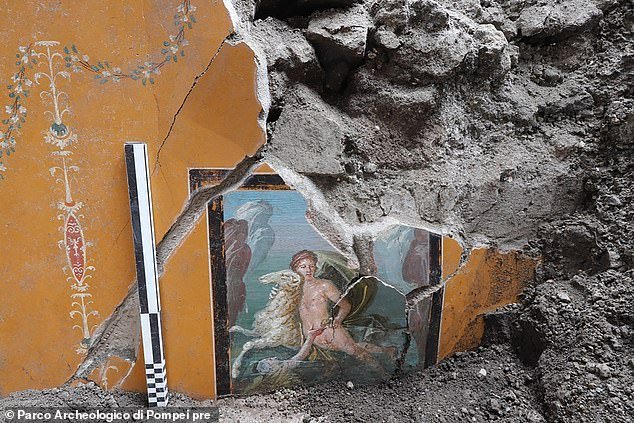

The beautiful work of art is a ‘fresco’ – a kind of mural – but due to damage to the wall it has not been fully preserved
The new artwork was unveiled by the Archaeological Park of Pompeii, the government-backed body that oversees the former city’s remains and ongoing excavations.
The astonishing piece is a ‘fresco’, a type of mural, but due to damage to the wall it has not been completely preserved.
The top right corner of the artwork has been lost and there are two noticeable cracks towards the center.
But what is there is in remarkable condition considering it is about 2,000 years old, with vibrant colors and intricate brushwork.
Dr. Sophie Hay, a British archaeologist who works at the Pompeii Archaeological Park, called it a “magical” discovery.
“Witnessing the vibrant colors of newly uncovered frescoes in Pompeii is a privilege and a joy that never fades,” she said.
‘Seeing the final discovery of a mythological scene – Phrixus sitting on a ram while his sister Helle drowns – in the context of the room it decorated is no exception.’
In Greek legend, the two siblings are forced to flee because their stepmother, Ino, wants to get rid of them.
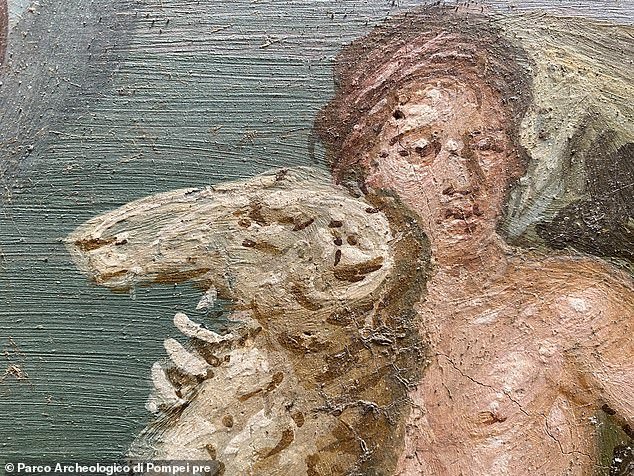

The painting shows the brother, Phrixus, riding the magical ram and being able to fly or swim
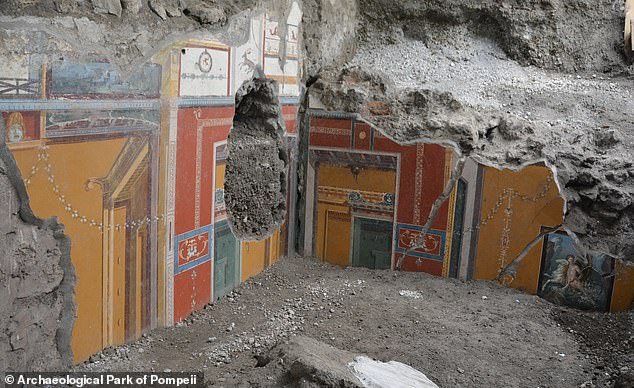

The lavish artwork was found in the House of Leda, known for its intricate murals
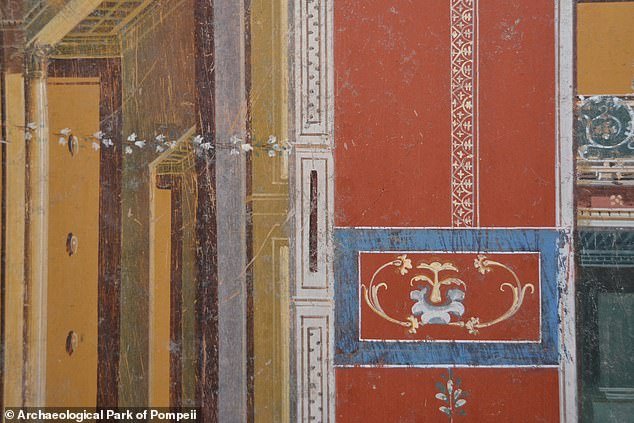

Pompeii was destroyed in 79 AD by the eruption of Mount Vesuvius, but excavations continue to yield ancient discoveries
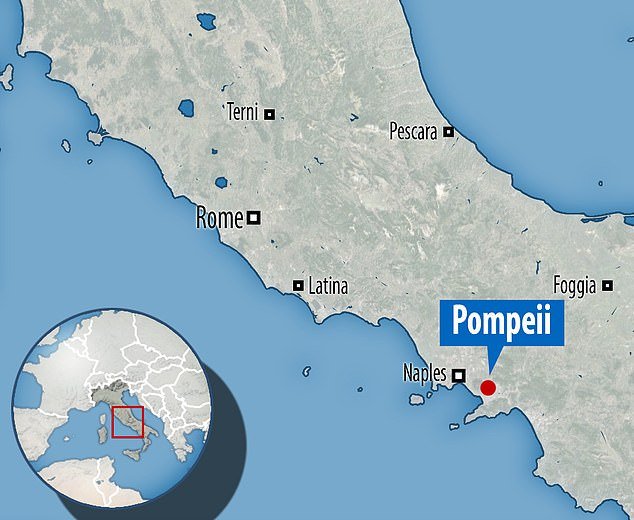

Today, the ruins of Pompeii are a popular tourist attraction, attracting a million visitors every year. Located on the west coast of Italy, Mount Vesuvius is the only active volcano in continental Europe
The painting shows the brother Phrixus riding the magical golden woolly ram, which can fly or swim.
The sister, Helle, falls from the ram into the water and asks her brother for help.
According to legend, Helle eventually drowns, while Phrixus flees safely to the region called Colchis, where he sacrifices the ram to Zeus, who places it as a constellation in the sky.
Experts are hopeful that the newly found fresco will be put on public display in Pompeii, which attracts almost four million visitors a year.
The new discovery is part of ongoing excavations at the House of Leda, known for its highly intricate murals.
But Dr Andrew Sillett, a lecturer in classics at the University of Oxford, pointed out that ‘not all domestic art is like this’.
‘In the hall, visitors are greeted by a large painting of Priapus, a fertility god, placing his enormous erection on a scale to see how it compares to the fruits of that year’s harvest,’ he told MailOnline.
‘So horses for courses.’
Before the eruption of Mount Vesuvius in 79 AD, Pompeii was a thriving and wealthy Roman city with about 11,000 inhabitants.
The catastrophic event destroyed the settlements of Pompeii, as well as the settlements of Herculaneum, Torre Annunziata and Stabiae, killing up to 16,000 people.
After the eruption, the bodies of those killed in Pompeii were famously preserved in a protective shell of ash before eventually decaying.
Since the mid-19th century, the cavities left by these bodies were eventually filled with plaster casts to recreate their final moments.






